Bromoxynil octanoate
- CAS NO.:1689-99-2
- Empirical Formula: C15H17Br2NO2
- Molecular Weight: 403.11
- MDL number: MFCD00055484
- EINECS: 216-885-3
- SAFETY DATA SHEET (SDS)
- Update Date: 2024-12-18 14:08:57
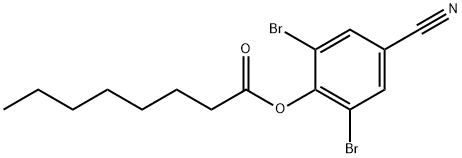
What is Bromoxynil octanoate ?
Chemical properties
Bromoxynil is a colorless to white crystalline solid or tan powder. Odorless (pure).
The Uses of Bromoxynil octanoate
Herbicide.
The Uses of Bromoxynil octanoate
Selective contact foliage-applied herbicide used to control many broad-leaved weeds such as bindweed, chickweed and Veronica spp. in cereals.
General Description
A solid. Used as a selective contact herbicide.
Reactivity Profile
Bromoxynil octanoate is an ester. Readily hydrolyzed to bromoxynil and octanoate at pH's exceeding 9.
Health Hazard
Highly toxic, may be fatal if inhaled, swallowed or absorbed through skin. Avoid any skin contact. Effects of contact or inhalation may be delayed. Fire may produce irritating, corrosive and/or toxic gases. Runoff from fire control or dilution water may be corrosive and/or toxic and cause pollution.
Fire Hazard
Non-combustible, substance itself does not burn but may decompose upon heating to produce corrosive and/or toxic fumes. Containers may explode when heated. Runoff may pollute waterways.
Flammability and Explosibility
Not classified
Agricultural Uses
Herbicide: A U.S. EPA restricted Use Pesticide (RUP). Herbicide used for alfalfa seedlings, barley, corn, flax, garlic, grasses, mint, oats, onions, popcorn, rye, sorghum, triticale, wheat. See also below.
Trade name
BROMINAL®-W; BUCTRIL® Bromoxynil octoate; NPH-1320®
Potential Exposure
Bromoxynil is a hydroxybenzonitrile herbicide used for postemergent control of broadleaf weeds; on alfalfa, garlic, corn, sorghum, flax, cereals, turf and on pasture and rangelands. A United States Environmental Protection Agency RUP.
Environmental Fate
Chemical/Physical. Emits toxic fumes of nitrogen oxides and bromine when heated to decomposition (Sax and Lewis, 1987). Hydrolyzes, especially at pH >9, to bromoxynil and octanoic acid (Hartley and Kidd, 1987; Worthing and Hance, 1991).
Shipping
UN2588 Pesticides, solid, toxic, Hazard Class: 6.1; Labels: 6.1—Poisonous materials, Technical Name Required.
Incompatibilities
A weak acid; keep away from bases and alkalies. React with boranes, alkalies, aliphatic amines, amides, nitric acid, sulfuric acid. Keep away from oxidizers (chlorates, nitrates, peroxides, permanganates, perchlorates, chlorine, bromine, fluorine, etc.) and strong acids.
Waste Disposal
Do not discharge into drains or sewers. Dispose of waste material as hazardous waste using a licensed disposal contractor to an approved landfill. Incineration with effluent gas scrubbing is recommended. Consult with environmental regulatory agencies for guidance on acceptable disposal practices. If allowed, Incineration with effluent gas scrubbing is recommended. Containers must be disposed of properly by following package label directions or by contacting your local or federal environmental control agency, or by contacting your regional EPA office.
Properties of Bromoxynil octanoate
| Melting point: | 45-46°C |
| Boiling point: | 424.6±45.0 °C(Predicted) |
| Density | 1.6040 (rough estimate) |
| vapor pressure | 0Pa at 40℃ |
| refractive index | 1.6220 (estimate) |
| storage temp. | Sealed in dry,Room Temperature |
| form | neat |
| form | Solid |
| color | White to off-white |
| Water Solubility | 30μg/L at 20℃ |
| BRN | 2756636 |
| CAS DataBase Reference | 1689-99-2(CAS DataBase Reference) |
| NIST Chemistry Reference | octanoic acid, 2,6-dibromo-4-cyanophenyl ester(1689-99-2) |
| EPA Substance Registry System | Bromoxynil octanoate (1689-99-2) |
Safety information for Bromoxynil octanoate
| Signal word | Danger |
| Pictogram(s) |
 Skull and Crossbones Acute Toxicity GHS06  Health Hazard GHS08  Environment GHS09 |
| GHS Hazard Statements |
H312:Acute toxicity,dermal H317:Sensitisation, Skin H410:Hazardous to the aquatic environment, long-term hazard |
| Precautionary Statement Codes |
P202:Do not handle until all safety precautions have been read and understood. P273:Avoid release to the environment. P280:Wear protective gloves/protective clothing/eye protection/face protection. P301+P310:IF SWALLOWED: Immediately call a POISON CENTER or doctor/physician. |
Computed Descriptors for Bromoxynil octanoate
New Products
1-Boc-4-cyanopiperidine tert-Butyl carbazate 1-(TERT-BUTOXYCARBONYL)-2-PYRROLIDINONE TETRABUTYLAMMONIUM CYANIDE TETRAHYDRO-2H-PYRAN-3-OL 3-Pyridineacrylic acid Nickel(II) perchlorate hexahydrate, 98% 4-Bromophenylacetonitrile, 95% 3-Bromo-4-fluoroaniline, 97% Sodium tetraborate decahydrate, 98% Palladium(II) acetate, trimer, Pd 99% 4-Bromo-2-chlorotoluene, 97% Tadalafil Clopidogrel bisulfate Sitagliptin Phosphate Monohydrate Cabergoline Fexofinadine HCl Etoricoxib 4-Amino Acetophenone 2-Chloro Acetophenone Amlodipine Base 2,3,5-Triiodobenzoic Acid Pyrrolidine Diiodo PentoxideRelated products of tetrahydrofuran


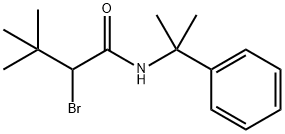
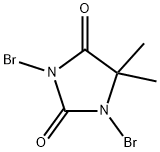
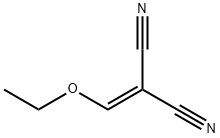
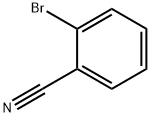


You may like
-
 Bromoxynil octanoate 99%View Details
Bromoxynil octanoate 99%View Details -
 366789-02-8 Riveroxaban 98%View Details
366789-02-8 Riveroxaban 98%View Details
366789-02-8 -
 Phenylephrine HCl 61-76-7 98%View Details
Phenylephrine HCl 61-76-7 98%View Details
61-76-7 -
 Carvedilol 98%View Details
Carvedilol 98%View Details
72956-09-3 -
 Abiretorone 154229-18-2 98%View Details
Abiretorone 154229-18-2 98%View Details
154229-18-2 -
 73590-58-6 Omeprazole 98%View Details
73590-58-6 Omeprazole 98%View Details
73590-58-6 -
 201530-41-8 Deferasirox 98%View Details
201530-41-8 Deferasirox 98%View Details
201530-41-8 -
 Sertraline HCl 98%View Details
Sertraline HCl 98%View Details
79559-97-0
